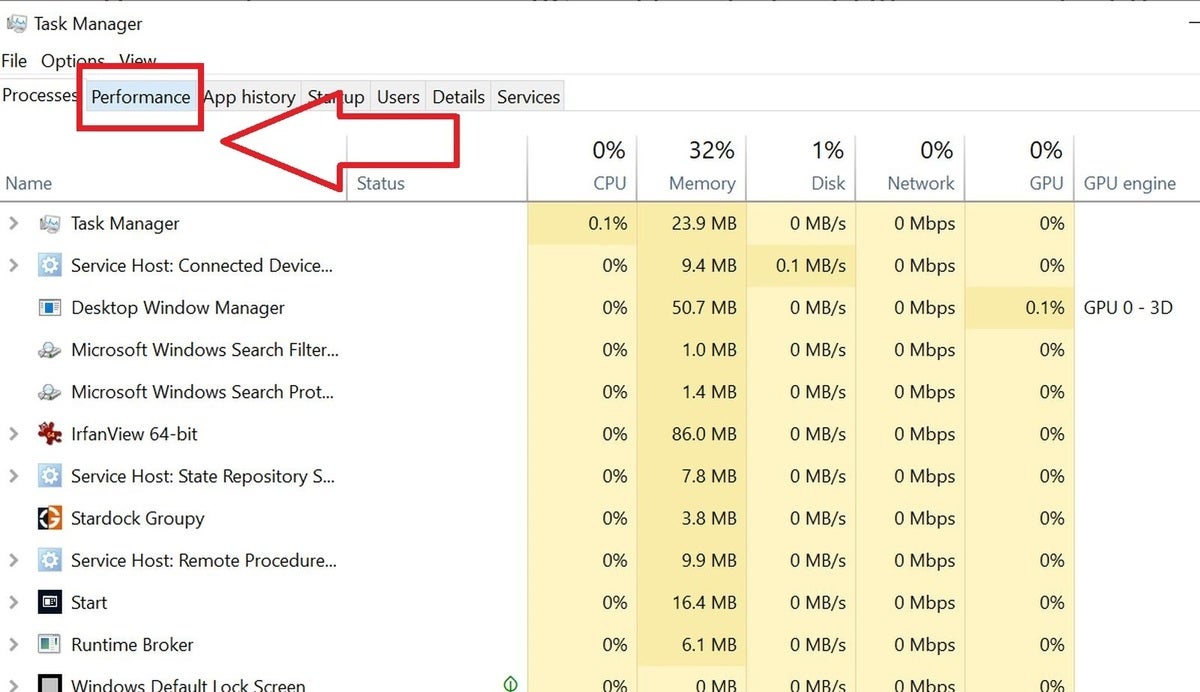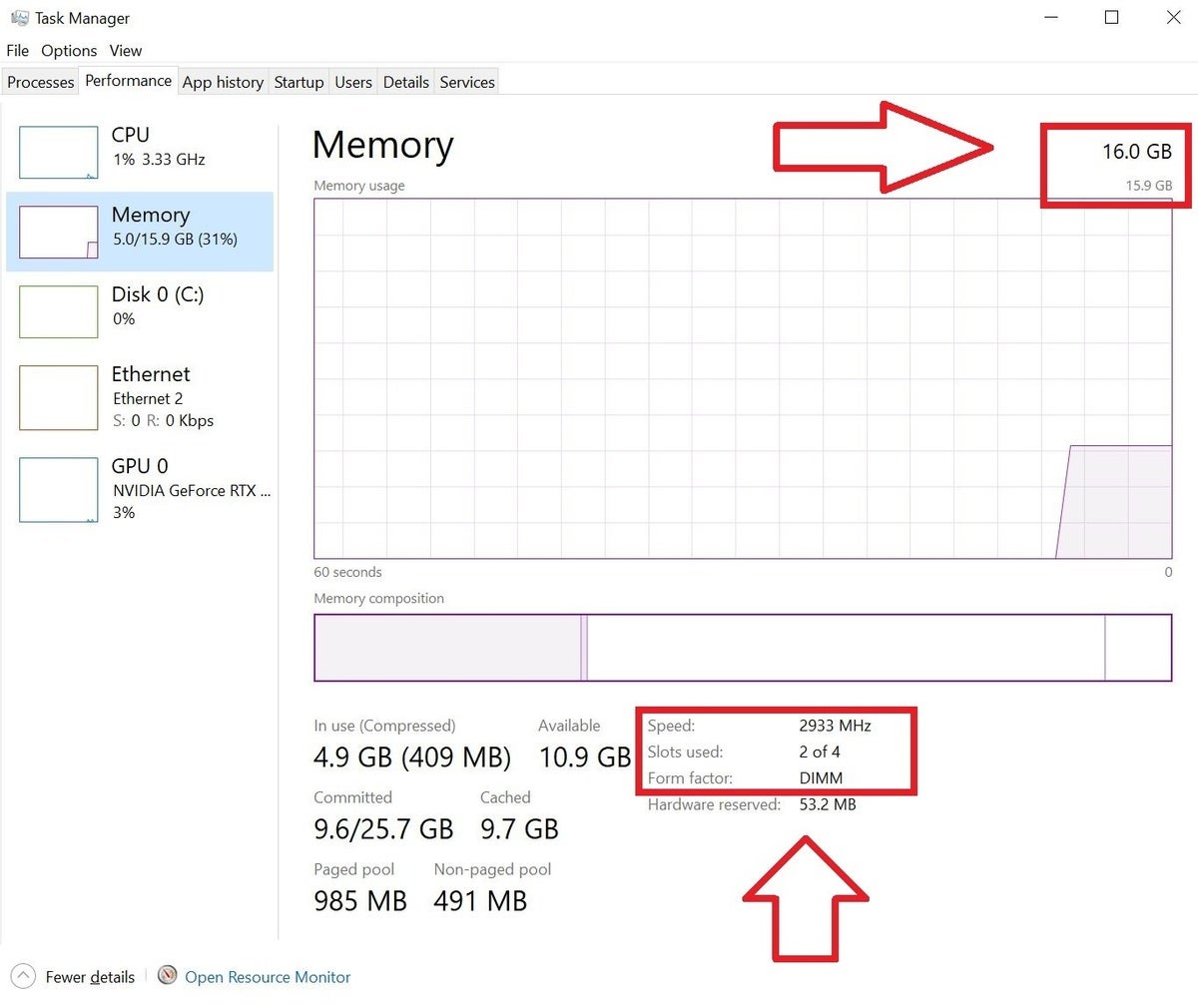How to check how much memory is in your computer

How much memory is and how fast is it on your computer? It’s something interesting to remember. Too little memory in your PC can lead to performance problems if you have a lot of programs or browser tabs open, and your games cannot run as quickly as possible. If you have performance issues and don’t know how much memory is on your machine, it’s worth testing.
Most memory modules provide all the related data on a sticker, including power, speed, and even latency times. You don’t have to go through the trouble of breaking your setup, though. In only a few taps, on laptops and desktops, Windows 10’s Task Manager offers the most important information.
Related: Complete Guide to Digital Privacy for Parents
See how much memory is in your computer
It is easy to check RAM your computer has. First, press Ctrl + Shift + Esc on your keyboard to summon Windows 10’s Task Manager.

The default Task Manager view displays a large list of currently running processes on your PC, but we are not searching for that. Click the Output button at the top of the page instead.

In the main section of the screen, you can see a chart, along with a hardware list on the left side. Click Memory. Choose Memory. The main section of the screen contains all the details you need to know about the amount of RAM in your PC. At the top of the pane, you can see the maximum storage space, while underneath the output map are more granular data.
Related: 5 Technological Breakthroughs of Medical Circles in 2021
The categories of speed and slots are of special importance. Slots Included explains how many available memory slots in your computer are actually loaded with RAM while Speed lists the processing speed of your memory. You’re going to require an open socket or slot, and the new RAM would equal that of the current memory if you want to add additional memory to your computer without entirely deleting the already existing RAM. It is better to stop mixing and matching RAM and, if possible, replace the whole memory at once.
Our guides to mount new RAM in your laptop and exchange memory will assist you in upgrading your RAM after scoping out the memory specs of your PC. Via an 8 GB alternative you can use people who use your machine for important functions such as e-mail, word processing and web browsing. Any pace is just going to do it. Gamers can bump more quickly than up to 16 GB of memory. If you update the memory of a notebook instead of a PC on your desktop, you need to purchase a new RAM built on the laptop from our previously linked guide.












One Comment